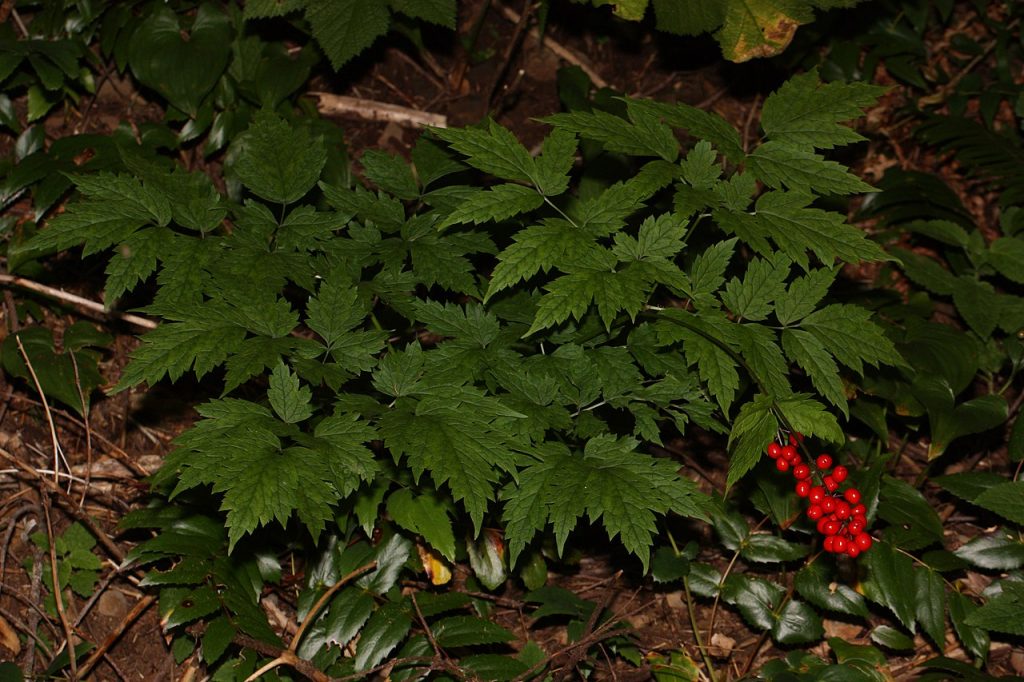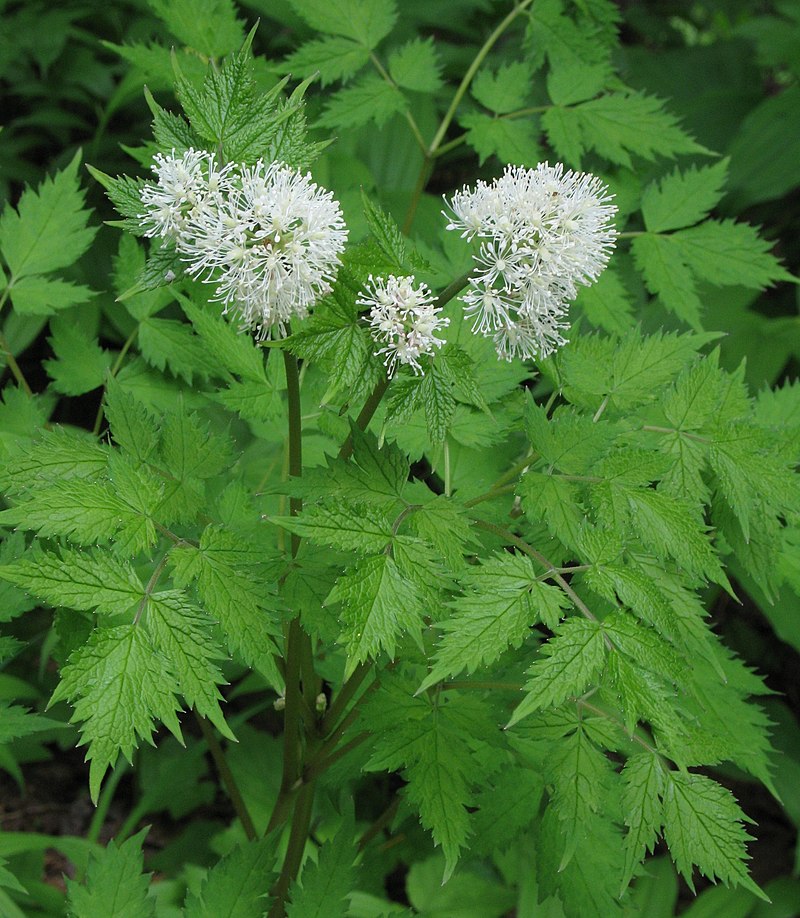
This herbaceous perennial is native to shady areas with moist to wet soils of most of North America except the southeast US (from Virginia to Texas). It is a member of the buttercup family, Ranunculaceae, that also includes delphinium, anemone, and hellebore. The clumps of foliage and glossy red berries are attractive in the garden making red baneberry a good choice for native plant, shade, and woodland gardens. Native Americans have traditionally poisoned arrows with the berries, and some groups have used a decoction of the berries medicinally. Photo Credit Walter Siegmund Wikimedia Commons

Description: The plant is unbranched or sparingly branched, grows 1-3′ tall and has alternate, widely spreading leaves. Each leaf is 1.5′ long, 2 or 3 times compound, and has 3-5 ovate leaflets that are up to 2″ long, and have coarsely toothed margins and hairy undersides. From late spring to early summer, terminal clusters of flowers appear. The clusters are about 2″ long and carry flowers that are 1/4″ across and consist of 4-10 white petals surrounding a pistil and numerous white-tipped long stamens. The petals quickly drop off and fertilized flowers give way to pea-sized, glossy red (occasionally white) berries containing several seeds. The berries are attractive to birds but are poisonous to humans. Photo Credit: Robert Flogaus-Faust Wikimedia Commons
Poisonous Properties: All parts of the plants are toxic, especially the roots and berries although the berries are so bitter few people eat enough for the poisoning to be fatal. Red baneberry contains the toxin protoanemonin, and an undetermined toxin which is probably an essential oil or poisonous glycoside. Symptoms include burning of mouth and throat, salivation, severe stomach cramps, headache, diarrhea, dizziness, increase pulse, circulatory failure, and hallucinations, and can last up to 3 hours.
Soil: Fertile, moderately moist, acidic
Hardiness: Zones 4-8; likes cool moist conditions
Care: Cut back after flowering or fruiting
Pests and Diseases: None of significance
Propagation: Seed in the fall, division in early spring
Companion Plants: Maidenhair fern (Adiantum pedatum), jack-in-the-pulpit (Arisaema triphyllum), Canada mayflower (Maianthemum canadense)
Outstanding Selections: None
Photo Credit: Robert Flogaus-Faust Wikimedia Commons